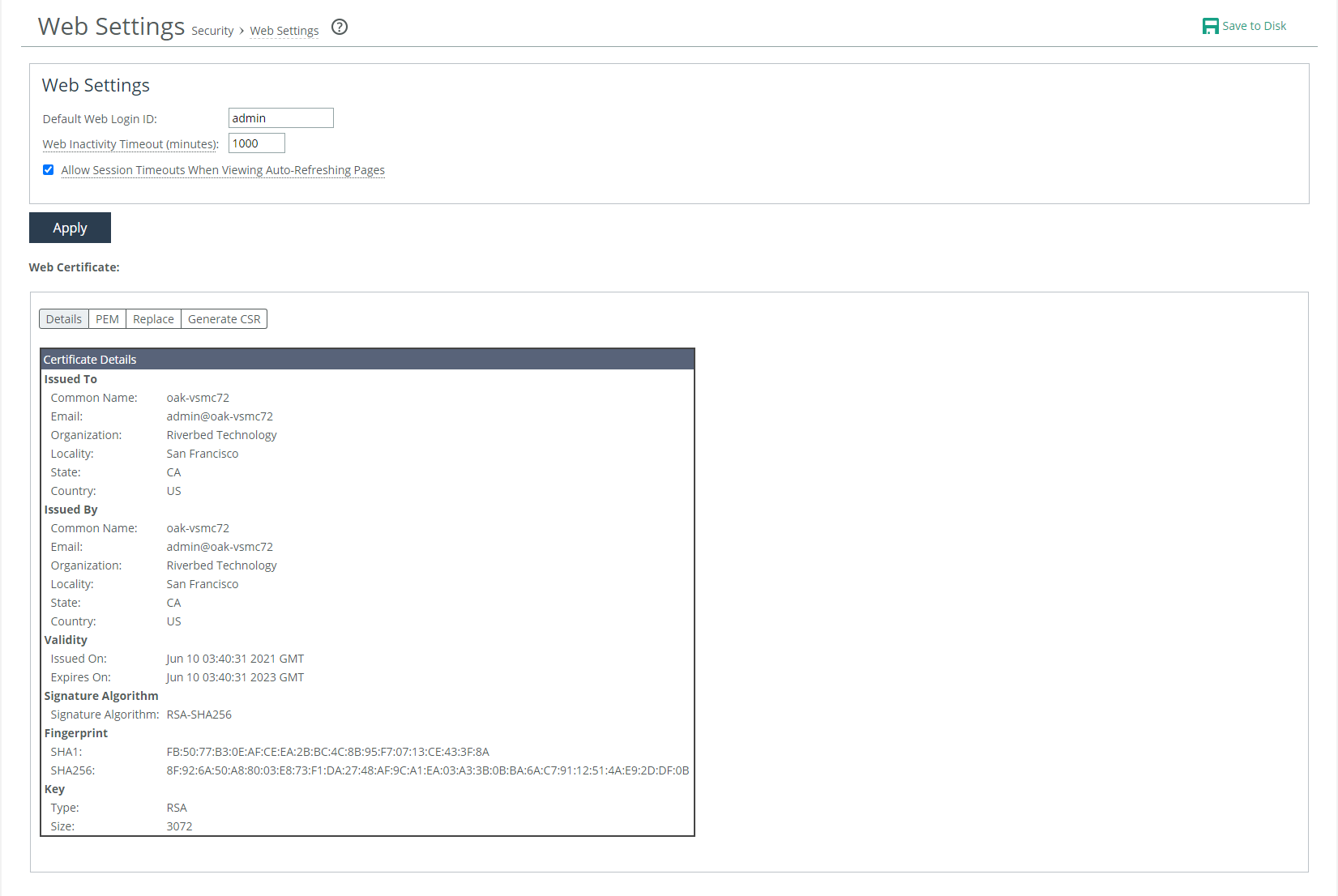Web Settings page


Control | Description |
Default Web Login ID | Specify the username that appears in the authentication page. The default value is admin. |
Web Inactivity Timeout | Specify the number of idle minutes before time-out. The default value is 15. A value of 0 disables time-out. |
Allow Session Timeouts When Viewing Auto-Refreshing Pages | By default, session time-out is enabled, which stops the automatic updating of the report pages when the session times out. Clear the Allow box to disable the session time-out, remain logged-in indefinitely, and automatically refresh the report pages. Disabling this feature poses a security risk. |
Control | Description |
Issued To/Issued By | Common Name—Specifies the common name of the certificate authority. |
Organization—Specifies the organization name (for example, the company). | |
Organization Unit—Specifies the organization unit name (for example, section or department). | |
Locality—Specifies the city. | |
State—Specifies the state. | |
Country—Specifies the country. | |
Serial Number—Specifies the serial number (Issued To, only). | |
Validity | Issued On—Specifies the date the certificate was issued. |
Expires On—Specifies the date the certificate expires. | |
Fingerprint | Specifies the SSL fingerprint. |
Key | Type—Specifies the key type. |
Size—Specifies the size in bytes. |
Control | Description |
Import Existing Private Key and CA-Signed Public Certificate (One File in PEM or PKCS12 Formats) | Imports the existing private key and CA-signed public certificate as a single file. The page displays controls for importing a single file either by browsing to and uploading the certificate and keys or by using the text box to copy and paste a PEM file. Then enter the decryption password in the Decryption Password field, if necessary. Decryption passwords are required for PKCS-12 files, and they are optional for PEM files. |
Import Existing Private Key and CA-Signed Public Certificate (Two Files in PEM or DER Formats) | Imports the existing private key and CA-signed public certificate as two separate files. Import the private key either by browsing to and uploading the file or by copying and pasting a PEM file into the key text box. Then enter the decryption password in the Decryption Password field, if necessary. Decryption passwords are optional for PEM files, and they are never needed for DER files. Import the public certificate either by browsing to and uploading the file or by copying and pasting a PEM file into the certificate text box. |
Generate New Private Key and Self-Signed Public Certificate | Select this option to generate a new private key and self-signed public certificate. |
Cipher Bits—Select the key length from the drop-down list. The default value is 1024. | |
Organization Name—Specify the organization name (for example, the company). | |
Organization Unit Name—Specify the organization unit name (for example, the section or department). | |
Locality—Specify the city. | |
State—Specify the state. | |
Country—Specify the country (two-letter code only). | |
Email Address—Specify the email address of the contact person. | |
Validity Period—Specify how many days the certificate is valid. The default value is 730. |
Control | Description |
Common Name | Specify the common name (hostname). |
Organization Name | Specify the organization name (for example, the company). |
Organization Unit Name | Specify the organization unit name (for example, the section or department). |
Locality | Specify the city. |
State | Specify the state. Don’t abbreviate. |
Country | Specify the country (2-letter code only). |
Email Address | Specify the email address of the contact person. |